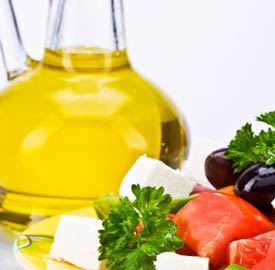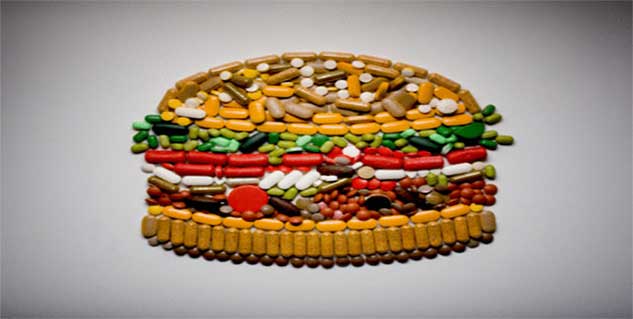How Anyone Can Eat Healthy On A Tight Budget

A few years ago, while promoting The Virgin Diet, I spoke at a local health food store. Afterwards, during the Q&A, the last question caught me off-guard. “How do you expect a mom with an out-of-work husband and three children to afford grass-fed beef?” asked a woman from the back row.
I had my answers in place. Healthy food becomes inexpensive health care, I reasoned, and those bargain menus aren’t such a great deal when you factor in bigger-picture issues like obesity and diabetes. If grass-fed beef becomes too expensive, simply stick with mostly plant foods.
Yet her question stayed with me. As a single mom with two teenage sons, I understood her situation all too well.
I became determined to dig a little deeper about eating healthy without spending half your paycheck. On my drive home that day, I brainstormed these 10 effective strategies. I’ve long employed them to stretch even the tightest food budget.
1. Buy locally and in season.
Learn what foods correspond with which seasons for nutrient-dense, less expensive foods. Locally grown strawberries in June will always be cheaper and fresher than shipped-from-Mexico berries in December.
2. Buy frozen and stock up.
Frozen foods eliminate the I left it in the fridge all week and forgot about it, darn it! problem and save you money! You can buy weeks’ worth of organic veggies and other foods to store in your freezer, so you always have essentials like organic frozen spinach and raspberries.
3. Skip prepared or partially prepared foods and go DIY.
Pre-sliced veggies, trimmed-and-cleaned chicken breasts, and pre-cooked anything provide convenience at a price. Maintain a DIY attitude and chop, slice, and prep yourself.
4. Whenever possible, buy generic instead of brand.
Whole Foods 365 products are fabulous and sometimes even better than conventional store product equivalents: less expensive and healthier. One time I compared brand-name almond butter with generic almond butter. Unlike the name brand, guess what wasn’t in the store brand? Sugar. Stores often market their own brand but because they don’t have a middleman, you buy an identical product for less money.
5. Set a budget, make a list in advance and don’t shop hungry.
Funny how your basket becomes full when you visit your grocery store hungry, fully intending to only buy one or two items. Plan ahead, write down exactly what you need, eat before you go, stick with your budget, and don’t be swayed by unhealthy bargains.
6. Start your day with a protein shake.
For less than you’d spend on a designer coffee, you can make a fast, filling, fat-burning protein shake. Blend non-dairy, non-soy protein powder with frozen berries, leafy greens, avocado, freshly ground flax seed, and unsweetened coconut or almond milk.
7. Load up your plate with high-fiber foods.
My number-one nutrient for eating less: fiber delays gastric emptying, balances blood sugar, curbs cravings, and makes you full faster. What’s not to love? Aim for two or three high-fiber foods at every meal. Excellent choices include avocado, legumes, nuts, seeds, and leafy greens.
8. Do your planning.
You know the saying: fail to plan, plan to fail. Whether your goal is fast fat loss or getting a healthy meal on the table for your family, thinking ahead can save you time, money, and effort. If you know you’ll be stuck late at work tomorrow, prep dinner ingredients and you’ll be far less tempted to spike your credit card bill ordering in or grabbing take-out.
9. Learn the dirty dozen.
In a perfect world, every food would be organic. Realistically, sometimes it becomes hard to justify spending three times as much on organic produce. That's why you want to know the Dirty Dozen: you always want to buy these 12 most-contaminated foods organic. The "Clean 15" are your least contaminated foods, with few or no contaminants. If you're going to buy non-organic, stick with these 15.
10. Brew your own.
Coffee and tea, that is! Ever tallied how much you spend on those fancy coffee-shop drinks? (Don't even get me started about those stale pastry or low-fat muffins you add to your order.) Become your own barista and brew a cup of organic coffee or green tea for far less than what you’d spend at a coffee shop.
Calling all health-minded savvy shoppers: what one strategy would you add to my list to stretch your food budget? Share yours below.
Photo Credit: Shutterstock.com
-
Reasons Youre not losing Weight
Losing weight becomes a lifelong battle for many people. Even af
-
Atkins Vs GoCarb Diet Which Is Best
In terms of books sold, perhaps the Atkins diet is the most successful
-
Asian Fat Loss Secrets
Asian fat reduction secrets have been applied for thousands of years b
-
FAT doesnt make you FAT
In the 1980s we were all told that to ke
-
The Natural Approach to Reducing the Risk of Heart Disease:
Are you one of the millions of folks that is suffering from heart d
-
Healthy Diet Is A Key To Healthy Weight Loss
Since ages, there exists a thinking in the minds of people that lo
- DON'T MISS
- Can Quick Weight Loss Really Work?
- Avoid These Mistakes In Weight Loss
- Lose Weight Fast With Fat Loss 4 Idiots Program
- How to Enjoyably Lose Most of That Body Fat Naturally
- How To Get In Shape Without Stress?
- 10 Weight Loss Tips To Help You Keep Your New Years Weight Loss Resolutions
- The Absolute best and Most Entertaining Workout
- What Is Medical Tourism
- Why Training Like A Body Builder Will Not Make You Look Like An Athlete!
- Seeking Solid Advice About Fitness? Look Here!




